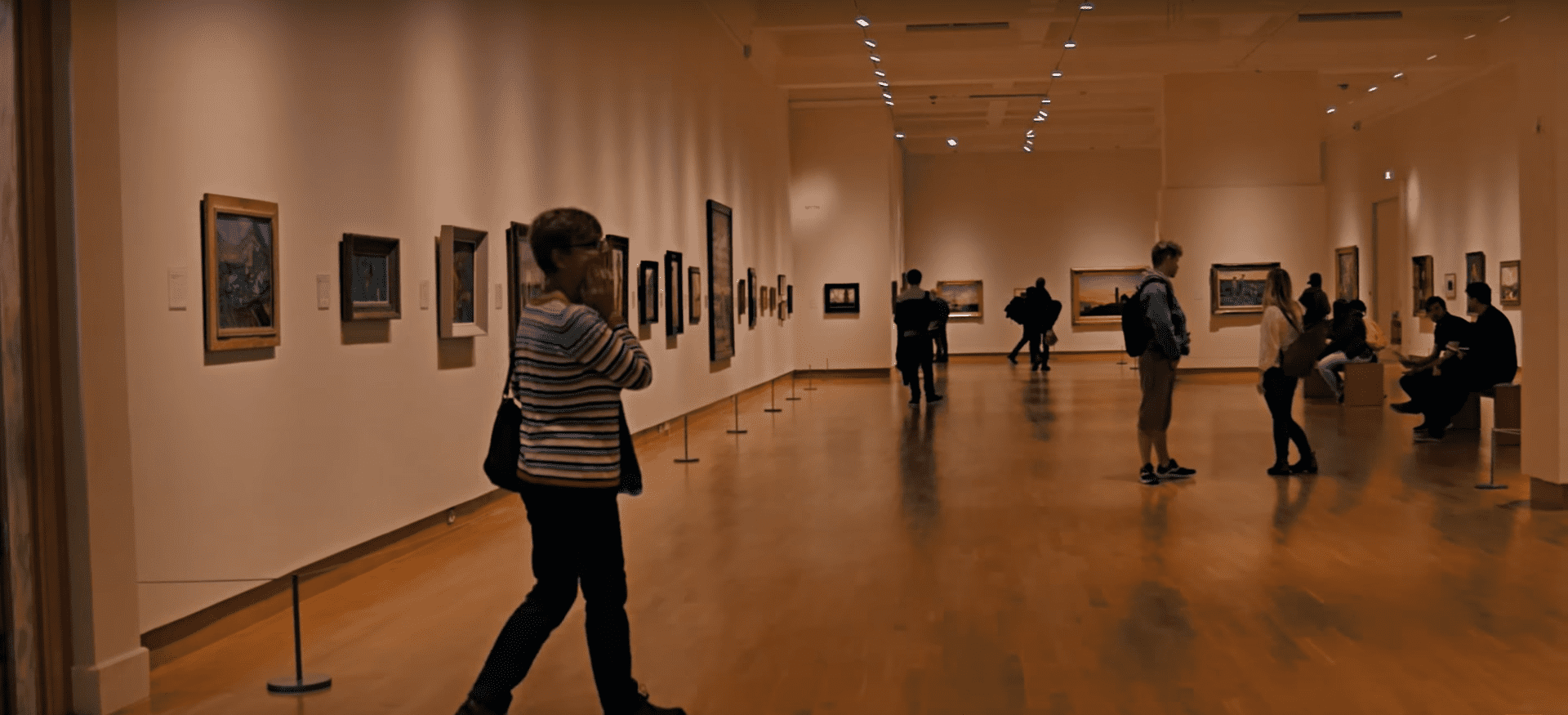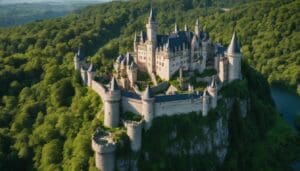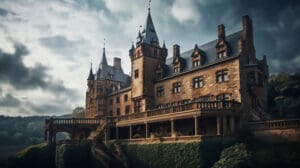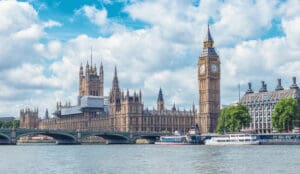The Beautiful Works of John Lavery: On Display at the Ulster Museum, Amazing 19th/20th Century Art

Updated On: November 08, 2023 by Ciaran Connolly
Belfast’s Ulster Museum is an institution run under the National Museums Northern Ireland. This museum aims to educate and entertain visitors with exhibits on various topics surrounding Northern Irish and Irish history and culture as well as other topics important to the national curriculum or local interest. This includes the works of renowned Northern Irish painter John Lavery.
Read on to learn more about the life and work of John Lavery and what you can expect to experience on your trip to see the Ulster Museum collections.
What to Expect at the Ulster Museum
When visiting the Ulster Museum the best way to start your trip is to head to the top floor and work your way down. The museum is spread over four floors with various zones dedicated to areas of interest. Don’t worry, there’s a lift to take you up to the top floor.
The museum is split into History, Nature, and Art zones with various topics covered within. Such as the History Zone which is split into topics such as Egyptology and the Spanish Armada as well as eras such as Modern History or Ancient Ireland. For those interested in plants, animals, and geology there are many things for you to enjoy in the Nature Zone. They even have a stone from the Giants Causeway on display.
The museum is free to enter and is situated in the stunning botanic gardens meaning you can enjoy a picnic after your visit if you go to the museum on a sunny day. (Maybe bring an umbrella just in case, as Belfast weather is unpredictable).
The Museum is open from 10 am to 5 pm every day except for Mondays. Make sure to check online in case of holiday closures or maintenance. If you are looking for inspiration for your trip check out this guide to visiting museums.
One of the main galleries which form the Art Zone is where you will find the art of the Northern Irish painter, John Lavery. Here’s a bit more information on this famous painter:
Who Was Sir John Lavery?
John Lavery was a Northern Irish painter in the 19th and 20th centuries working on portraiture and wartime paintings. He was born in North Belfast on the 20th of March, 1856. Unfortunately, Sir Lavery lost both parents at an early age, leaving him an orphan to be raised by his other relatives. Lavery did not have the upper-class roots or wealth expected of a portrait artist of the time working his way up to fame through his own merit.
Lavery spent some of his childhood in Scotland where he would later return for artistic schooling later in his life. He was very well-travelled and trained in art not only in Glasgow but also in London and Paris. He and his second wife, Hazel continued to travel the world throughout their lives together and some of these travels made it to canvas including a scene of Tangier Bay in 1920 in his painting ‘Tangier Bay, Sunshine’.
Lavery was known as a painter of peace and war due to his role as a wartime artist. This job involved recording the events of the war, in Lavery’s case World War One, so that they could be saved for the historical record. For his role as a wartime artist, John Lavery was given a knighthood after World War One ended.
Sir Lavery was also involved and held an interest in the political goings on in Ireland at the time including the Irish War of Independence as was his wife, Hazel. During negotiations over the Anglo-Irish treaty, they gave their residence in London for use by negotiators. He also created a portrait of Michael Collins following his assassination in 1922. He named the painting ‘Michael Collins (Love of Ireland)’.
Sir John Lavery – Is this Ireland’s Favourite Painting?
What Influenced Sir John Lavery’s Paintings?
His travels and the war were only two of Lavery’s major influences in his creation of art. There were, of course, many more that played a role in how his works were created.
Family
One of the key themes of a lot of the works of Lavery is the inclusion of his family. Many of his portraits feature his daughters, his wife, or a family scene. Domestic scenery is a key aspect of the peace Lavery captured in his work to balance the war. Works such as ‘The Chess Players’ (1929) show this domestic family life typical of many Laverys.
His second wife, Hazel Martyn, is considered by many to be his muse and walking around the galleries of the Ulster Museum you are sure to spot her in more than a few of his works.
The Glasgow Boys
John Lavery during his time studying art in Glasgow became part of a group of radical painters called the Glasgow Boys who had similar inspirations and captured the world in a modernist style. John Lavery became one of the leaders of the group developing a style with influences from Fench and Dutch painters. Lavery also brought in influences from Whistler, who was an American artist based in the UK. In some of Lavery’s paintings, you can see the influence of Whistler in his use of white tones and brush strokes used.
The Glasgow Boys were the driving force behind the Scottish Modernist painting movement of the late 19th and early 20th centuries. John had spent time in Scotland in his childhood and is revered in Scotland for his art as well as Northern Ireland with a large volume of his paintings placed on display at Kelvingrove Museum and Art Gallery. His role as a member of the Glasgow Boys is remembered for the mark he left on Scottish art.
What John Lavery Paintings Are On Display At The Ulster Museum?
There are many works of Lavery to see when visiting the Ulster Museum from landscapes to self-portraits. Here are a few highlights you can look forward to seeing:
Daylight Raid From My Studio Window, 1917.
This wartime painting was created in the studio of John Lavery capturing his wife, Hazel, reacting to a dogfight happening outside. This scene took place on the 7th of July 1917 and shows German biplanes taking on the British in the skies of London. It shows the worry of his wife peeking over a blackout curtain at the fighting beyond in contrast to the relaxed mess of the studio where she is standing.
This painting stands in a large golden frame in the main gallery space of Lavery’s works at the Ulster Museum in the Art Zone.
The Green Coat, 1926
This portrait of Lady Lavery, as his wife Hazel was known, was the favourite of his muse. She believed it to be the best portrait of her he had ever painted. The relaxed pose and slouch to her gown show the intimacy between Lavery and his subject. It is no wonder she was happy with her likeness as it is a beautiful portrait.
Self Portrait, 1928
This confident and modern piece of self-portraiture was completed by Lavery at the age of seventy-two and shows the years of experience coming together. Lavery is framed in an oval mirror as if caught painting his own portrait in the framing of a less modern traditional portrait style. Behind him in the mirror are swimmers from the Chiswick Baths which he had painted previously. Lavery brings together these various elements to create a more modern style of portrait which is a little bit fun and different.
John Lavery himself donated all of these works to the city of Belfast before his death in 1941. The city of Belfast meant a lot to Lavery throughout his life although he had moved away at a young age. He was even made a freeman of the city of Belfast in 1930 after his work as a wartime painter and he received his knighthood.
Other Iconic Works of John Lavery Around The UK
Lavery’s works aren’t only displayed in the Ulster Museum collections and If you are travelling around the UK and want to see more of Lavery there are a few key pieces you should look out for including;
Second Study for the King, the Queen, the Prince of Wales, the Princess Mary, Buckingham Palace (1913), in the National Gallery, London.
This piece really shows the success of Lavery’s painting career as he was commissioned to paint the royal family. This piece is a large and quite traditional portrait piece which is on display in London’s National Gallery. Given the subject matter, it is no wonder that Lavery chose to experiment less with such an important piece of work.
Anna Pavlova (1881–1931), Kelvingrove Museum and Art Gallery, Glasgow.
Truly one of the most captivating works of Lavery is his portrait of Anna Pavlova, the ballerina in full movement. This work uses the movement of her pose, her clothing, and her red cloth to full effect bringing the viewer into the scene. This portrait gained attention more recently on the internet due to a little girl being photographed dancing alongside Anna Pavlova in Kelvingrove Museum and Art Gallery, Glasgow.
The Opening of the Modern Foreign and Sargent Galleries at the Tate Gallery, 26 June 1926, Tate Modern in London.
If you are visiting the Tate Modern Museum in London you may spot this work from LAvery which is appropriately capturing the night of the opening of some of their galleries. This is another of Lavery’s more formally framed paintings as a commission but is still rich in colour and his classic style. Lavery was commissioned by the Tate Moder to capture the occasion and the paintings remain in their collections to this day.
Conclusion
The Ulster Museum collections contain lots of beautiful art pieces which are displayed throughout the Art Zone. these pieces are often from Northern Irish or Irish artists such as John Lavery. Sir Lavery’s work contributed to the modernist movement in Scottish art and his portraiture and wartime art cemented him as one of the great Northern Irish artists.
His work inspired by both peace and war is recognised for his fluid brushstroke techniques, use of colour, and modern themes. His life of travel and family is seen in his work throughout his life, especially in the portraits of his wife and muse. His work as a wartime artist not only got him a knighthood but also helped depict world war I events for future generations through art. Works such as ‘Daylight Raid Frpm My Studio Window’ show the realities of World War I even now.
Lavery’s works are one of the many reasons that you should visit the Ulster Museum and learn more about the art that he created and why. If you are visiting Belfast or live there you should check out the Lavery works next time you are at the museum or visit them on your travels.
Want to learn more about the Ulster museum and its collections? Check out our complete guide, here.






